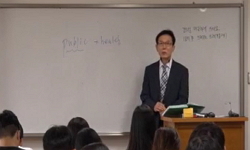Background: The olfactory bulb is anatomically exposed and thus can be directly damaged by external stimulation. This can occur as an occupational injury owing to contact with organic solvents or other causes. We present cases of eight patients who su...
http://chineseinput.net/에서 pinyin(병음)방식으로 중국어를 변환할 수 있습니다.
변환된 중국어를 복사하여 사용하시면 됩니다.
- 中文 을 입력하시려면 zhongwen을 입력하시고 space를누르시면됩니다.
- 北京 을 입력하시려면 beijing을 입력하시고 space를 누르시면 됩니다.
https://www.riss.kr/link?id=A105233375
- 저자
- 발행기관
- 학술지명
- 권호사항
-
발행연도
2018
-
작성언어
English
- 주제어
-
등재정보
KCI등재후보
-
자료형태
학술저널
-
수록면
67-74(8쪽)
- DOI식별코드
- 제공처
-
0
상세조회 -
0
다운로드
부가정보
다국어 초록 (Multilingual Abstract)
Background: The olfactory bulb is anatomically exposed and thus can be directly damaged by external stimulation. This can occur as an occupational injury owing to contact with organic solvents or other causes. We present cases of eight patients who sustained occupation-related exposure to potentially toxic substances and later presented with signs and symptoms of anosmia. We examined the occupational and medical characteristics of the patients and evaluated their work-relatedness.
Case presentation: Case 1: A 50-year-old man performed high-frequency heat treatments for approximately 11 years. He experienced decreased senses for olfaction and taste during the later years culminating in the diagnosis of anosmia after 3 years (high work-relatedness). Case 2: A 54-year-old man whose work involved exposure to various organic solvents, such as spray painting and application of paint and thinners for approximately 4 years, was subsequently diagnosed with anosmia based on rhinorrhea, headache, and loss of olfaction (high work-relatedness). Case 3: A 44-year-old-man who performed spray painting for approximately 17 years developed anosmia (high work-relatedness). Case 4: A 44-year-old man was involved in ship engine cleaning once a month, for approximately 7 h per cleaning session; he was diagnosed with anosmia based on loss of olfaction (low workrelatedness). Case 5: A 41-year-old man worked in ship building block construction for approximately 13 years; anosmia diagnosis was based on loss of olfaction (low work-relatedness). Case 6: A 47-year-old woman performed product inspection and labeling at a plant manufacturing automobile parts; anosmia diagnosis was based on decreased olfaction and taste (low work-relatedness). Case 7: A 50-year-old woman performed epoxy coating in a plant manufacturing automobile parts; anosmia diagnosis was based on diminishing olfaction (low workrelatedness). Case 8: A 57-year-old woman performed cleaning of the area where mobile phone parts were manufactured; anosmia diagnosis was based on diminishing olfaction (low work-relatedness).
Conclusion: The study results confirmed work-relatedness when the subject was young, and the duration of exposure was long without any other cause of anosmia. Regarding compensation for occupational diseases, work-relatedness can be recognized as a relative concept.
목차 (Table of Contents)
- Abstract
- Background
- Case presentation
- Discussion
- Conclusions
- Abstract
- Background
- Case presentation
- Discussion
- Conclusions
동일학술지(권/호) 다른 논문
-
Probability of causation for occupational cancer after exposure to ionizing radiation
- 대한직업환경의학회
- Eun-A Kim
- 2018
- KCI등재후보
-
Radiation-related occupational cancer and its recognition criteria in South Korea
- 대한직업환경의학회
- Songwon Seo
- 2018
- KCI등재후보
-
Does formaldehyde have a causal association with nasopharyngeal cancer and leukaemia?
- 대한직업환경의학회
- Soon-Chan Kwon
- 2018
- KCI등재후보
-
- 대한직업환경의학회
- Hogil Kim
- 2018
- KCI등재후보






 DBpia
DBpia


